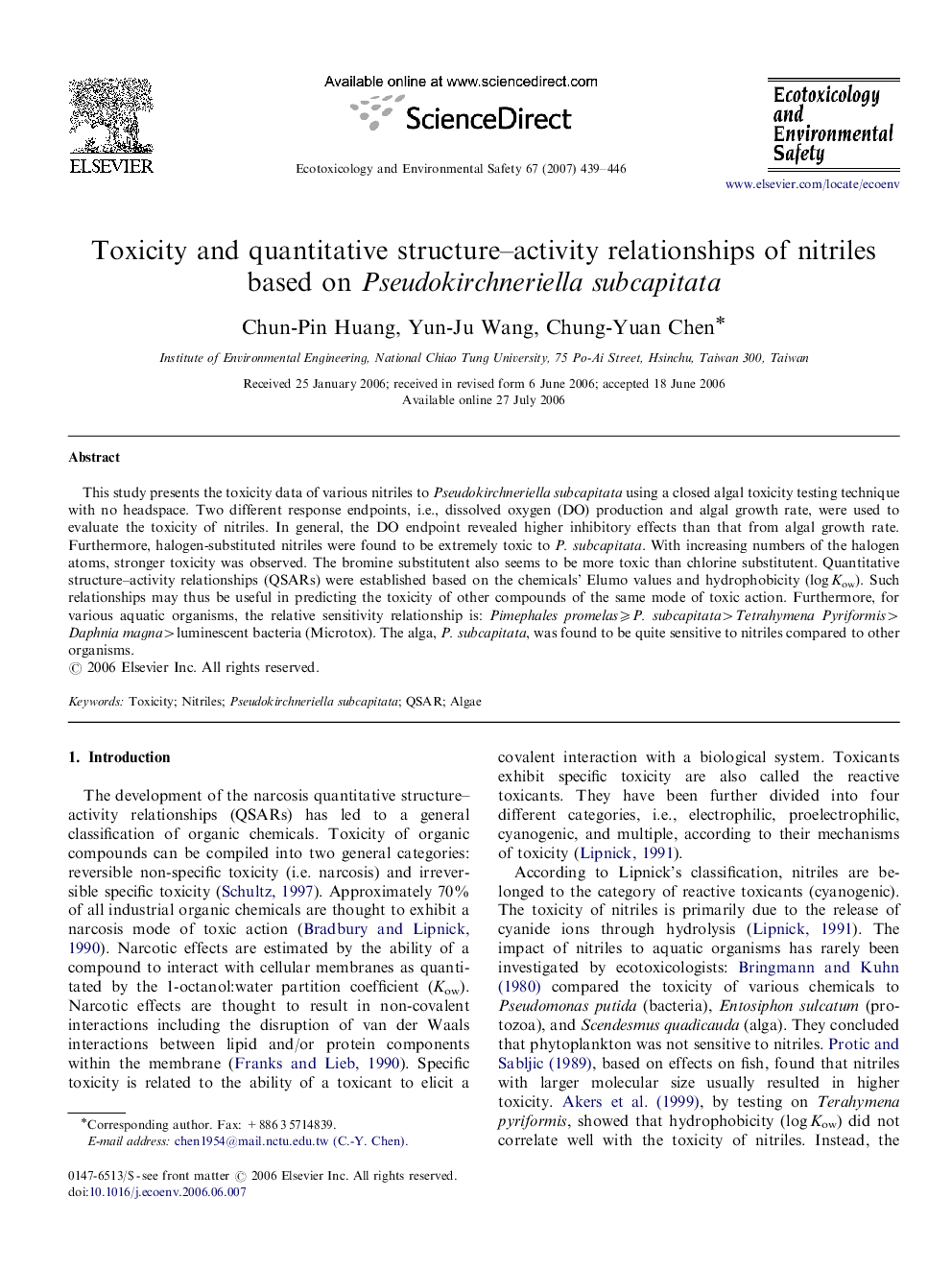| Article ID | Journal | Published Year | Pages | File Type |
|---|---|---|---|---|
| 4422511 | Ecotoxicology and Environmental Safety | 2007 | 8 Pages |
This study presents the toxicity data of various nitriles to Pseudokirchneriella subcapitata using a closed algal toxicity testing technique with no headspace. Two different response endpoints, i.e., dissolved oxygen (DO) production and algal growth rate, were used to evaluate the toxicity of nitriles. In general, the DO endpoint revealed higher inhibitory effects than that from algal growth rate. Furthermore, halogen-substituted nitriles were found to be extremely toxic to P. subcapitata. With increasing numbers of the halogen atoms, stronger toxicity was observed. The bromine substitutent also seems to be more toxic than chlorine substitutent. Quantitative structure–activity relationships (QSARs) were established based on the chemicals’ Elumo values and hydrophobicity (log Kow). Such relationships may thus be useful in predicting the toxicity of other compounds of the same mode of toxic action. Furthermore, for various aquatic organisms, the relative sensitivity relationship is: Pimephales promelas⩾P. subcapitata>Tetrahymena Pyriformis>Daphnia magna>luminescent bacteria (Microtox). The alga, P. subcapitata, was found to be quite sensitive to nitriles compared to other organisms.
